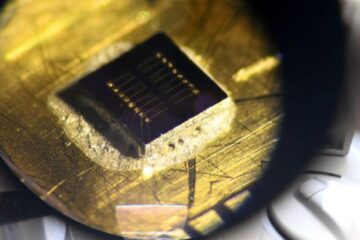Experts create new German chemistry portal www.Chem.de

In a cooperative project of development the German Chemical Society Gesellschaft Deutscher Chemiker (GDCh), the German National Library of Science and Technology Technische Informationsbibliothek (TIB) Hannover and FIZ CHEMIE Berlin have created Chem.de, a new information and knowledge platform for chemistry. Interfaces both in German and in English are available. The development was funded by the German Federal Ministry of Education and Research (BMBF). It also supports the operational service. Chem.de will be on display at the Online Information 2006 exhibition, London 28 Nov – 30 Nov, Grand Hall, Stand No 322.
Chem.de supports the navigation through German professional education and training, research, conferences and meeting activities in chemistry. The portal is jointly operated by the development partners. Each of them supplies own content, e.g. information on research projects, e-learning courses covering chemistry subjects or conference data. As a supplement many entries are featured with evaluated hyperlinks to further information. Along with this Chem.de provides the community with a discussion forum and informs on vacancies in science and industry. All information provided can be searched using Chem.de as a centralised access point. The basic services are offered for free. If the portal connects to value-added services pop-up windows inform about the conditions of purchase.
About the partners:
The GDCh is the largest chemical society in Europe with approx. 27.000 members from universities, industry and other areas. The GDCh supports chemistry in teaching, research and application and promotes the understanding of chemistry in public.
The TIB Hannover is the German National Library of Science and Technology covering all areas of engineering and its basic sciences, in particular chemistry, information technology, mathematics and physics. The TIB comprehensivly acquires and archives literature from around the world pertaining to engineering and natural sciences. The library places a particular emphasis on acquiring so-called “grey” literature; i.e. conference proceedings, research reports etc.
FIZ CHEMIE Berlin is a state-supported non-profit information agency with more than 25 years experience in digital scientific information services. Its primary task is to provide high-quality information services concerning chemistry, chemical engineering and related fields to science, education and industry.
For additional information
FIZ CHEMIE Berlin
P.O. Box 12 03 37
D-10593 Berlin
Germany
http://www.chemistry.de
info@fiz-chemie.de
Contact for the press
Richard Huber
Head, Marketing & Communication
phone: +49 30 399 77 217
fax: +49 30 399 77 132
eMail: huber@fiz-chemie.de
All statements in this press release that are not historical are forward- looking statements within the meaning of the U.S. securities laws. Such statements are based upon current expectations that are subject to risks and uncertainties. Actual results may vary materially from those projected because of factors such as uncertainties relating to technologies, product development or manufacturing, market acceptance, cost or pricing of FIZ CHEMIE Berlin's products, dependence on collaborations and partners, regulatory approvals, competition, intellectual property of others, or patent or copyright protection or litigation.
Media Contact
All latest news from the category: Life Sciences and Chemistry
Articles and reports from the Life Sciences and chemistry area deal with applied and basic research into modern biology, chemistry and human medicine.
Valuable information can be found on a range of life sciences fields including bacteriology, biochemistry, bionics, bioinformatics, biophysics, biotechnology, genetics, geobotany, human biology, marine biology, microbiology, molecular biology, cellular biology, zoology, bioinorganic chemistry, microchemistry and environmental chemistry.
Newest articles

Sea slugs inspire highly stretchable biomedical sensor
USC Viterbi School of Engineering researcher Hangbo Zhao presents findings on highly stretchable and customizable microneedles for application in fields including neuroscience, tissue engineering, and wearable bioelectronics. The revolution in…

Twisting and binding matter waves with photons in a cavity
Precisely measuring the energy states of individual atoms has been a historical challenge for physicists due to atomic recoil. When an atom interacts with a photon, the atom “recoils” in…

Nanotubes, nanoparticles, and antibodies detect tiny amounts of fentanyl
New sensor is six orders of magnitude more sensitive than the next best thing. A research team at Pitt led by Alexander Star, a chemistry professor in the Kenneth P. Dietrich…





















